- Best Software Company in UAE
- 3 Comments
- 863 Views
Introduction to Mobile Website Design: A Comprehensive Guide
In the last decade, the landscape of mobile website design has undergone a remarkable transformation. This evolution reflects a fundamental shift in the way we interact with the digital world through our mobile devices. This article serves as a comprehensive guide to the world of mobile website design, delving into its essential elements, the challenges designers face, and the latest trends shaping the future of mobile web experiences.
We’ll explore everything from the basics of responsive design to the intricacies of user interface creation, ensuring that you gain a thorough understanding of what makes a mobile website effective and engaging.
Click Here To Start Mobile Website Design Now
This Guide Will Cover
Why is mobile website design important?
In 2015, Google made changes to its search algorithm due to the increasing use of the internet on mobile devices. The updated algorithm rewards websites optimized for mobile and penalizes those that aren’t.
So, if your device’s website structure isn’t effective, your chances of showing up in search results for your chosen keywords decrease. Even if you manage to attract users, you’ll encounter issues.
According to Google Analytics Data 2016, More than 50%% of all website traffic comes from mobile devices.
If users visit your site and it doesn’t display or work well on their device, they’re likely to leave in search of a better solution. This means more than half of your potential customers may click away before giving your site a chance.
Having a mobile-friendly landing page and website not only increases the likelihood of your pages being found but also reduces your bounce rate. It ensures that every visitor can fully use your site, giving your business the best chance to succeed.
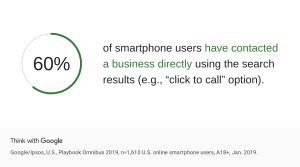
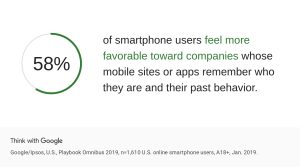
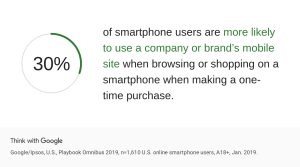
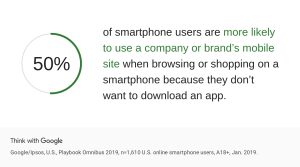
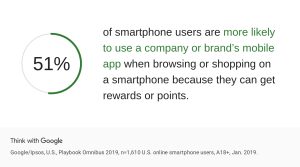

Understanding Mobile Users
Mobile users exhibit distinct behaviors compared to desktop users. They prefer quick, accessible information and are more likely to engage with websites that are tailored to their on-the-go lifestyle. Understanding these behaviors is crucial in creating an effective site framework.
1. Morning and Evening Interaction on Mobile Devices
Mobile users tend to be most engaged in the morning from 6 am to 9 am, as smartphones are often the first thing they check upon waking up. They explore updates on social media and news portals. In contrast, desktop users are typically active during working hours from 9 am to 6 pm.
2. Page Engagement Duration
IBM Insights indicates that impatience is a common trait among young mobile users. According to KISSmetrics, 40% of individuals will exit a website if it takes more than 3 seconds to load. To enhance user engagement, many websites implement Accelerated Mobile Pages (AMP). On desktops, users find comfort in opening tabs, leaving them idle, and returning to them later.
3. Mobile Apps Garner More User Attention Than Mobile Websites
Mobile users genuinely appreciate lightweight applications! They can quickly and effortlessly explore their interests, especially in e-commerce, using a faster and more streamlined app. The experience differs when compared to browsing on a mobile site. According to SmartInsights data, 89% of user time spent on media occurs through mobile apps, with only 11% happening on the mobile web. Brands can capitalize on the app’s features to enhance user satisfaction.
Click Here To Launch your Mobile App.
4. Mobile Users Are Younger
With more than 85% of Generation Y possessing smartphones, it implies they will invest more time using their mobile devices. In contrast, individuals using desktops tend to be a bit older, mainly because they are not as engaged with their smartphones.
5. Embrace Location Sharing Among Mobile Users
Sharing your location through a smartphone is a breeze. Various chat platforms, food apps, and e-commerce services allow you to effortlessly share your location using your mobile device. However, the process is different when using a desktop; the user experience for sharing location is more extended compared to a mobile device.

Key Elements of Mobile Website Design
The core of optimized architecture revolves around several key elements. Responsive web layouts ensure that websites adapt seamlessly to various screen sizes. Navigation is simplified through the use of hamburger menus, allowing users to easily access different sections of the site. Load times are crucial; faster loading enhances user experience significantly. Calls to action are designed to be more prominent and accessible, encouraging user interaction.
1- CTAs
The major issues often arise from clutter. That’s why many mobile sites opt for simple black text on a white background – it’s neat, easy to read, and instantly understandable.
For websites relying on calls to action (CTAs), ensure they are clear, easily readable, and prominently displayed. Choose an attractive color that aligns with your brand for buttons and use a font size suitable for reading while on the bus – a common scenario when users discover your website.
Consider finger sizes as well; nothing is more frustrating in mobile design than attempting to click a link that’s too small to tap.
2- Navigation
There are various types of mobile navigation bars, and the three stacked bars, known as the hamburger, are the most common. It has become so popular that it’s even found on desktop sites to maintain a clean, responsive design consistent with the brand across all platforms. You might have a header menu that transforms into a hamburger at a specific screen size or a combination of toggles, like a hamburger or a three-dot icon, bringing up different menus.
The challenge with overloading these features is that users might struggle to locate the content they’re searching for. While sidebars were once a simple solution for widescreen desktops, the trend towards vertical screens often leads to sidelining sidebars, further streamlining the design.
A useful guideline is to use sidebars sparingly and consider them as additional benefits, not the primary means of conveying crucial information.
3- Typography
When choosing a font, invest time in selecting one that remains visually appealing when scaled down. Typically, font sizes range between 16 and 20 pixels, ensuring sufficient space between lines and margins that avoid making the font seem congested.
In the digital realm, serifs are not commonly used for body text due to their increased difficulty in reading, especially in the context of mobile design.
Designing for Smaller Screens
Designing for smaller screens brings its own set of challenges. The limited space demands a focus on simplicity and clarity. Content must be concise, and visual elements need to be carefully crafted to ensure they are engaging yet not overwhelming.


Enhancing User Experience
User experience on mobile is enhanced through intuitive interfaces and interactive features. This includes touch-friendly elements, easy-to-read fonts, and streamlined navigation. The aim is to create an engaging and effortless experience for the user.
SEO Optimization for Mobile Web Design
SEO is crucial when it comes to designing websites for mobile devices. Mobile-friendly sites are favored in search results, making it essential to optimize for mobile. This includes ensuring quick load times, responsive structure, and mobile-friendly content.
Emerging Trends in Mobile Web Design
The future of creating responsive web layouts in the UAE is likely to see more AI integration, voice search optimization, and an even greater emphasis on user experience. Staying ahead of these trends is crucial for designers and businesses alike. Innovative UI/UX design trends in the UAE will play a significant role in shaping this future landscape, ensuring websites and applications meet the evolving expectations of users in the region.
Best Practices in Mobile Web Design
Adhering to best practices in the site framework is essential for success. This includes focusing on user-centric design, testing extensively across different devices, and keeping up with the latest design trends and technologies. The synergy between mobile app development and web design is particularly noteworthy in the UAE, where seamless integration of both platforms can significantly enhance the overall user experience. This collaboration ensures a cohesive digital presence, and staying informed about these synergies is crucial for businesses aiming to thrive in the competitive digital landscape of the UAE.
Role of Web Designers in Mobile Optimization
In making websites work well on mobile devices, web designers are super important. Their skills in crafting user-friendly, aesthetically pleasing, and functional designs are essential in meeting the demands of modern mobile users.
The Business Perspective
From a business standpoint, optimized architecture is not just a technical necessity but a strategic tool for growth. Businesses that invest in high-quality responsive web layouts often see significant improvements in customer engagement and conversion rates.
Conclusion
In conclusion, mobile website creation is a dynamic and ever-evolving field that demands a deep understanding of user behavior, technical proficiency, and creativity. As we continue to advance in the digital era, the importance of effective mobile web development will only grow, making it an essential aspect of any successful online strategy. If you’re looking to optimize your online presence, consider partnering with a leading Web Development and Design Company in the UAE. Our IT Software Development services are designed to elevate your digital experience, ensuring your website aligns seamlessly with the latest trends and user expectations. Start enhancing your online presence today with our expert Web Development and Design services.
Mobile Website Design FAQ
What is the most critical aspect of mobile website design?
The most critical aspect is creating a user-friendly, responsive design that ensures a seamless experience on all device sizes.
How does mobile website design impact SEO?
Mobile-friendly websites are favored in search engine rankings, making mobile optimization crucial for SEO.
What are common mistakes in mobile web design?
Overloading with too much content, poor navigation, and slow load times are common pitfalls.
This is the Can the same design work well for both mobile and desktop?
While a responsive design can adapt to both, it's important to tailor experiences specifically for mobile users.
How often should mobile website design be updated?
Regular updates are recommended to keep up with evolving design trends and technological advancements.








search engine optimization
Very interesting points you have remarked, thank you
for putting up.
Visit my website search engine optimization
Cocomelon Shoes For Cheap
Greetings! Very useful advice within this post!
It is the little changes that make the most important changes.
Many thanks for sharing!
search engine optimization Phoenix
WOW just what I was searching for. Came here by
searching for search engine optimization Phoenix engine optimization